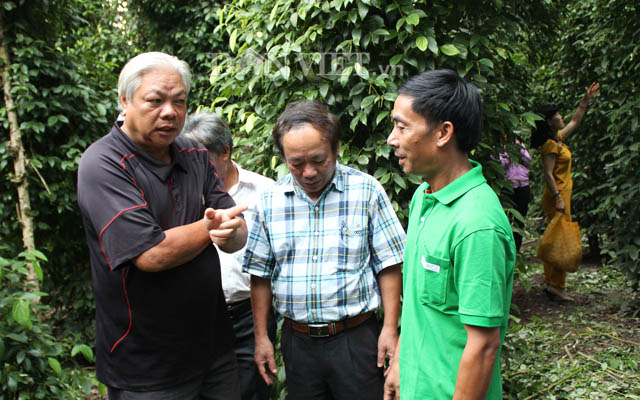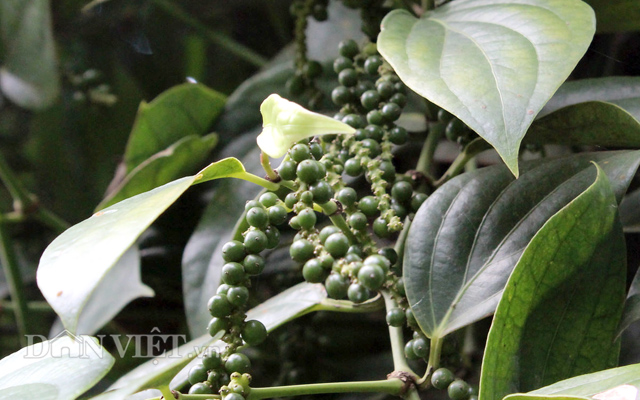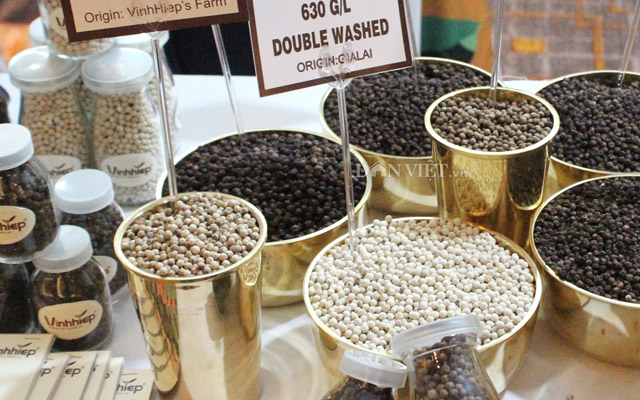Although the maximum allowable residue limit (MRL) is adjusted to extend until October 2020, EU countries banning the active ingredients Chlorpyrifos and Chlorpyrifos-methyl in agricultural products is considered to be a painful blow to the pepper industry.
The Vietnam Pepper Association (VPA) said that the European Union Commission (EU) has approved the draft regulation, the maximum residue level of all products containing active ingredients Chlorpyrifos and Chlorpyrifos-methyl will reduced to 0.01 mg / kg and will take effect in October 2020.
According to the European Food Safety Authority, plant protection products (plant protection products) containing Chlorpyrifos do not meet the approval criteria applicable to human health.
The EU ban on active ingredients Chlorpyrifos and Chlorpyrifos-methyl is considered to be a “painful blow” to Vietnam's pepper industry as well as the world.
Earlier, at the meeting in late 2019, EU countries voted to completely ban pesticides containing the active ingredient Chlorpyrifos on the European market. After voting to ban Chlorpyrifos and sending a notification to the WTO, the EU issued EU Implementing Regulations 2020/17 and EU 2020/18 in mid-January 2020.
In response to the move of the EU, the world spice industry has reacted strongly because it is the industry that creates livelihoods for farmers in many developing countries.
Lowering the maximum allowable residue (MRL) for EU Chlorpyrifos and Chlorpyrifos-methyl – which is the largest market in the world, will cause a great loss in the global spice industry supply chain.
On January 17, the International Pepper Association (IPC), a representative of its member countries of pepper producing countries, cooperated with the Government and spice industry to send a letter to the EU, asking for time. longer transitions for IPC member countries to comply with the new regulations.
The IPC member countries themselves, such as Malaysia and Vietnam, also sent official dispatches with similar requests, proposing to consider making the transition time more feasible.

The world spice industry has had a strong reaction because it is the livelihood creation industry for farmers in many developing countries.
IPC also works with relevant organizations to raise their full WTO views. Recently, on February 7, the European Spices Association (with more than 400 member companies based in Europe) requested the appropriate transition period of 2 years until the new MRL takes effect. ; as well as exempting the recall of products that have been manufactured and are currently on the market.
Similarly, the International Spice Trade Association (IOSTA) has also made a request for exemption of withdrawal of existing products on the market; more reasonable transition period until 2023. At the same time, the establishment of the MRL is based on technical feasibility, taking into account the inevitable challenges in the supply chain and the existence of chemical environments. .
Prior to the above moves, at the meeting on February 17-18; The maximum residue level of all products containing the active ingredients chlorpyrifos and chlorpyrifos-methyl prescribed by the EU will be reduced to 0.01 mg / kg and will take effect by October 10/2020.

Commercial activities will be greatly affected because the transition time is too short for this relatively widely used pesticide.
However, the new MRL level of 0.01 mg / kg at the time of entry into force in October 2020 was warned by experts to create significant events on agriculture and related parties, including spice industry.
With the growing cycle in the spice industry (harvest, export and trade) taking at least 3 years, farmers will not only lose an important tool in pest management, reducing yields. , but also cannot export products containing residues to the EU. In the worst case scenario, this scenario will last for 2-3 years.
Furthermore, with regard to pepper, the new MRLs will deal a sharp blow to the ongoing price reduction trend as farmers must start looking for other biocides to replace chlorpyrifos at a much higher cost if want to keep output.

Lowering the MRL for EU Chlorpyrifos and Chlorpyrifos-methyl will cause a great loss in the global spice industry supply chain.
According to VPA, pepper trading activities will be greatly affected because the transition time is too short for this widely used pesticide.
This also means that all products that have been manufactured as well as on shelves do not meet the new MRL requirements and need to be destroyed. This will cause serious financial waste to the pepper trade.
The deployment of new MRLs in October 2020 also causes a significant disruption of the spice supply from Indonesia, Vietnam, Brazil – countries supplying pepper to most European importing countries.
On the other hand, the prospect of consignments being refused to enter the EU due to chlorpyrifos residues is forecast to cause a scarcity of pepper reserves in European countries. At present, Chlorpyrifos and Chlorpyrifos-methyl are still allowed to be used in agriculture in some countries supplying pepper to Europe.
